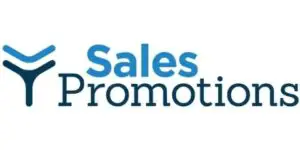Table of Contents
*This post may contain affiliate links. As an Amazon Associate we earn from qualifying purchases.
Creating an effective sales promotion campaign requires that you begin with a marketing plan to establish your product or brand’s market segments, competitive set, industry trends, and buying process. Once you thoroughly understand all the steps your customer takes in the buying process, sales promotion tools are useful in influencing buyer behavior. You can also use these tools to support other promotional efforts, such as advertising, sales, public relations, and online/direct sales.
If you want to strengthen your business, it is a good idea to familiarize yourself with the different sales promotion tools. Understanding them before you plan and implement a marketing strategy can help you to make the most from them.
What Are Sales Promotion Tools?
Sales promotion tools are something you must have in your bag of tricks if you want your business to grow and thrive. These tools are essentially something that gets the customer to make a purchase. They will stimulate the customer and get him or her into buying mode. They also make an offer that catches the eye so consumers feel like they cannot pass it up. Usually, such tools are a limited time type offer, which increases urgency even more.
Using sales promotion tools can help increase your overall sales. They are also a very solid way of bringing in new customers. You can use them throughout the life of your business to help you go from stage to stage and build a successful business.
Types of Sales Promotion Tools
There are a variety of tools you can use to promote your products and business. The key to making them effective is finding the right tool to use in your situation. Sometimes, one option may work better over another one. To find the right tool, you need to have some idea of your options, so the following is an overview of the different tools with an explanation about how they work.
Coupons and Price-Off Offers
Price off and coupons are the most widely used sales promotional offers. The point-of-sale price-off is the number one driver of sales in the packaged goods industry. Coupons come in second. Most often, coupons offer a price reduction. They also may offer other incentives, such as buy one, get one free. These tools drive new traffic, build loyalty and awareness in consumers, and are great for targeting specific markets that will actually come back to re-purchase without a discount in-hand. Coupons have an expiration date, so they get consumers to take action sooner rather than later.
Coupons work well in almost every sales situation. They are especially nice in e-commerce as customers can do searches to easily find them. Plus, they allow for easy tracking since you can create codes that allow you to know where someone got the coupon. Keeping track of coupon results and testing variable offers are imperative in the planning of future coupon and other sales promotion initiatives.
Rebates Offers
 Rebate offers come in second to coupons and price-offs in popularity among consumers. They take on many forms from the delayed gratification mail-in rebate to the immediate price-reduction of an instant rebate. Rebates are used to target new customers, promote new products or services, partner with other companies, and expand geographically. Retailers use rebates to increase sales and improve profits, and manufacturers use rebates to build awareness for the brand and to get a competitive advantage.
Rebate offers come in second to coupons and price-offs in popularity among consumers. They take on many forms from the delayed gratification mail-in rebate to the immediate price-reduction of an instant rebate. Rebates are used to target new customers, promote new products or services, partner with other companies, and expand geographically. Retailers use rebates to increase sales and improve profits, and manufacturers use rebates to build awareness for the brand and to get a competitive advantage.
The ability to collect customer data is a huge benefit of rebate programs. It provides customer insight that may be used to hone future sales promotional campaigns
Sweepstakes and Contests
Sweepstakes and contests are the most exciting sales promotion technique due to the allure of the big prize or reward. “Win” and “free” are strong words typically used in sweepstakes and contests headlines that activate the pleasure center of our brain and make us impulsive and competitive. This is the power behind sweepstakes and contests.

However, there is a bit of a legal situation you could get into if you do not run your contest or sweepstakes correctly. Understanding the difference between a lottery and these two promotional techniques will keep you in compliance with the law. (Do note that it is best to have a professional sales promotion agency write the rules to your game and have them reviewed by an attorney.)
A lottery consists of a prize, chance, and consideration (purchase). Only governments can run a lottery. If you take away consideration, you have a sweepstakes. Games that have a predetermined number of entries and eliminate chance by replacing it with skill are a contest. Some states may also require contests to not include a purchase requirement.
Sweepstakes and contests help you to build a mail list, educate consumers, and gather valuable survey data. The success of a sweepstakes or contest is usually determined by the creativity in the theme and prize structure. So, do not be afraid to get really creative with these endeavors.
Promotional Items
Promotional Items are useful items printed with the name, logo, message, or offer of a company. They break through the clutter of advertising messages by reaching the target consumer with a message that will be with them for as long as they have and use the promotional item. The industry includes over 200,000 different items that come in all price points, making for a flexible and budget-friendly tool. You can find anything to use from hats to pens to bags. Essentially, if you can print on it, then it can be a promotional item.
Using promotional items is an excellent device to expand your brand message to a highly targeted consumer base. People love receiving them and hold on to the items long after a promotional campaign is forgotten. According to a research study, 83 percent of American consumers like receiving a promotional product and 72 percent of consumers recall the specific product, advertiser, and the message two years after receiving the item.
Sampling

Providing consumers with a free sample is something they welcome and enjoy. Product sampling is a great way to introduce a new or improved product, demonstrate a different use for an established product, or reach new geographic areas. You can also use samples in a variety of ways. You do not have to always have them in a store demonstration. Depending on your product, you can also send them through the mail or include them in the packaging of other products.
Sampling gives the consumer the experience of the product’s quality and its value, which allows them to make a conscious decision about its attributes. The value of a free sample delivery campaign may be tracked for a year or longer and provide the opportunity to encourage brand switching or to create a new brand habit. However, you should note that producing sample-sized products and paying for the sample distribution process can be costly.
Loyalty and Continuity Programs
Loyalty and continuity programs are an ongoing sales promotion strategy offering incentives to reduce brand switching and increase customer value. In today’s highly competitive marketplace, many quality products are comparable. To overcome this obstacle, brands strive to create a relationship with customers and differentiate their product from the competition. Loyalty and continuity programs increase customer retention and attract new customers to participate while also adding an element of personalization to marketing efforts. Ideally, the value-added customer loyalty program extends the features of your ongoing relationship to further create a personal and emotional customer experience.
To launch a customer loyalty program you will need a base of customers, a purchase cycle that occurs with some frequency, and traditional or virtual rewards that customers will strive to achieve.
Final Words
Wrapping things up, the main point of sales promotional tools is finding a way to connect better with your customers and get them to make a purchase. Every tool can serve you well, but it is important that you know which tool will work best for your business at this time. So, make sure that you understand how each tool works and try to match that to your customer needs, company needs, and the current market. Doing this should enable you to make the most out of using a promotional tool.

